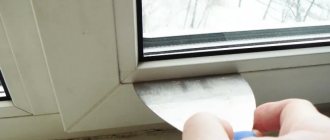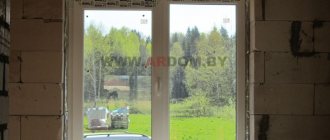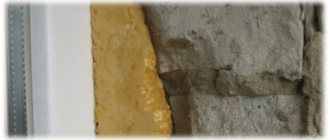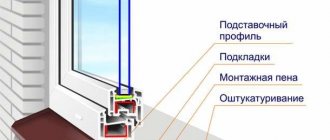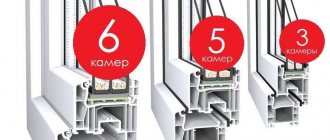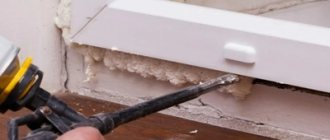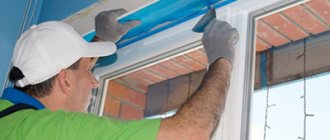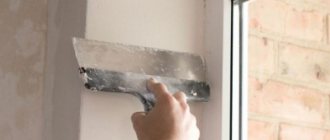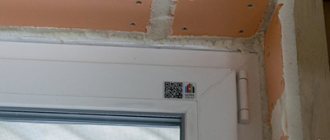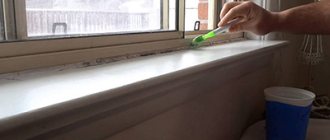Plastic windows provide complete tightness and sound insulation. However, over time, drafts appear and street noise begins to be heard. This means that the insulation has failed and requires replacement. There are many varieties on sale that allow you to correct the situation without much difficulty. However, for an untrained person it will be difficult to select a suitable sample. Let's look at what types of seals there are for plastic windows, and how to choose the best option.
Why are seals needed?
Polymer, silicone or rubber seals for plastic windows perform several functions:
- heat saving. Cold air enters the room through cracks in loosely fitting window structures. Housing heating costs are rising;
- dust protection. Along with the flow of outside air, a lot of dust, sand, and organic matter enters the apartment. Allergy sufferers are familiar with the flowering time of plants. A high-quality seal will solve the problem of intolerance to organic air components;
- sound insulation. External sounds are not able to penetrate through the normally functioning seal of plastic windows.
In addition, doors with normal seals stop slamming and close softly. This increases the service life of the plastic profile. Window seals for plastic frames ensure the tightness of the sashes and prevent an increase in humidity inside the room. Its service life is usually about 5 years, although longer operation is possible. It all depends on the operating conditions, material and method of installing the insulator.
Requirements
Currently, there are many rubber materials that are excellent for the production of window seals. They all differ from each other, have their own strengths and weaknesses, service life and conditions of use.
There is no direct regulatory document that would regulate the production and use of seals for PVC windows. However, these requirements are formulated in various regulatory documents regarding the production and operation of window structures, for example:
GOST No. 30674, published in 1999 and No. 1114, published in 1987 when determining the requirements for PVC windows;- GOST 30673, published in 1999, defines the requirements for the properties of components;
- GOST No. 52749, published in 2007, and No. 30971, published in 2012, establish the conditions for sealing seams.
According to these documents, the following basic requirements for the characteristics of window seals can be identified:
- High environmental and biological safety. The base materials used for manufacturing must be non-toxic and not subject to rotting.
- High strength, must withstand up to 300,000 compressions without losing the original characteristics of elasticity and strength.
- Resistance should prevent deformation processes.
- Wide temperature range for use from -40 to +55 C.
- A wide range of color options so that you can match any color window frame.
- Long service life of at least 25 years, and ideally, no less than the service life of the window unit.
When does a seal need to be replaced?
The fact that the sealant for PVC windows has exhausted its service life can be guessed by some signs:
- the room became cool, drafts appeared;
- Droplets of water have appeared on the glass or plastic profile. Ice appears on the seal itself and adjacent areas;
- the seal material is cracked;
- all sounds from the street began to be heard;
- dust appeared on the windowsill;
- when closing the doors, hard pops are heard;
- The seal has peeled off, has come out of the grooves and is sagging in places.
In addition, a sign of the need to replace the seal is the appearance of fungus or mold in the corners of the window opening.
Checking the tightness of the valves
The appearance of drafts, dust or ice is not always evidence of worn-out seals. A plastic window frame is a complex structure with many adjustment elements. A situation often arises when the polymer or rubber seal for windows is still new, but there are signs of its inoperability. This means that the sash is not adjusted correctly and does not fit tightly to the frame.
The check is carried out using a sheet of plain paper. It is applied to the box and the frame is closed. If the paper is easily pulled out of the slot, the seal is poor. If it is removed with force or even breaks, it means that the sash is in tight contact with the frame. The check must be carried out at different points around the sash perimeter in order to more accurately identify areas of poor fit and take action. If a poor fit of the sash is detected, it is necessary to adjust its position using the adjusting screws on the frame or on the frame.
Important! It is recommended to check the tightness of the seal every time you switch from the winter to the summer season, and vice versa. Changing the operating mode of the valves contributes to the appearance of areas of weak contact that require adjustment.
Domestic analogues
If you do not want to spend money on expensive European products, you can use cheaper Russian-made seals. Such or “Standard Prof” offer their products at an affordable price, and their quality is not much inferior to their foreign analogues. However, it should be taken into account that the shape of PVC seals for windows of some domestic models may not be suitable for foreign double-glazed windows.
On a note! If your home has branded plastic double-glazed windows from a well-known manufacturer, then it is better not to save money, but to install seals from the same company as the window.
Selection by form
It is impossible to purchase a seal at random. All varieties are designed for installation on a specific type of profile and have their own shape. You always need to know exactly which sealant for plastic windows is needed in this case. The ideal option is to purchase material from the same company. This is guaranteed to ensure full compliance with the shape and size of the gasket.
However, it is not always possible to buy products from a certain company. Therefore, it is necessary to keep in mind that there are 3 types of shapes that can be used for certain windows:
- KBE;
- REHAU;
- VEKA.
In addition to these varieties, there are others, but they are few in number and are less commonly used for installation on windows. The remaining types always belong to one of the listed groups and can be installed on similar types of windows. This interchangeability allows you to quickly select a replacement without losing the performance of the seal.
Attention! A piece of “native” seal taken with you to the store as a sample will help you avoid mistakes when choosing.
